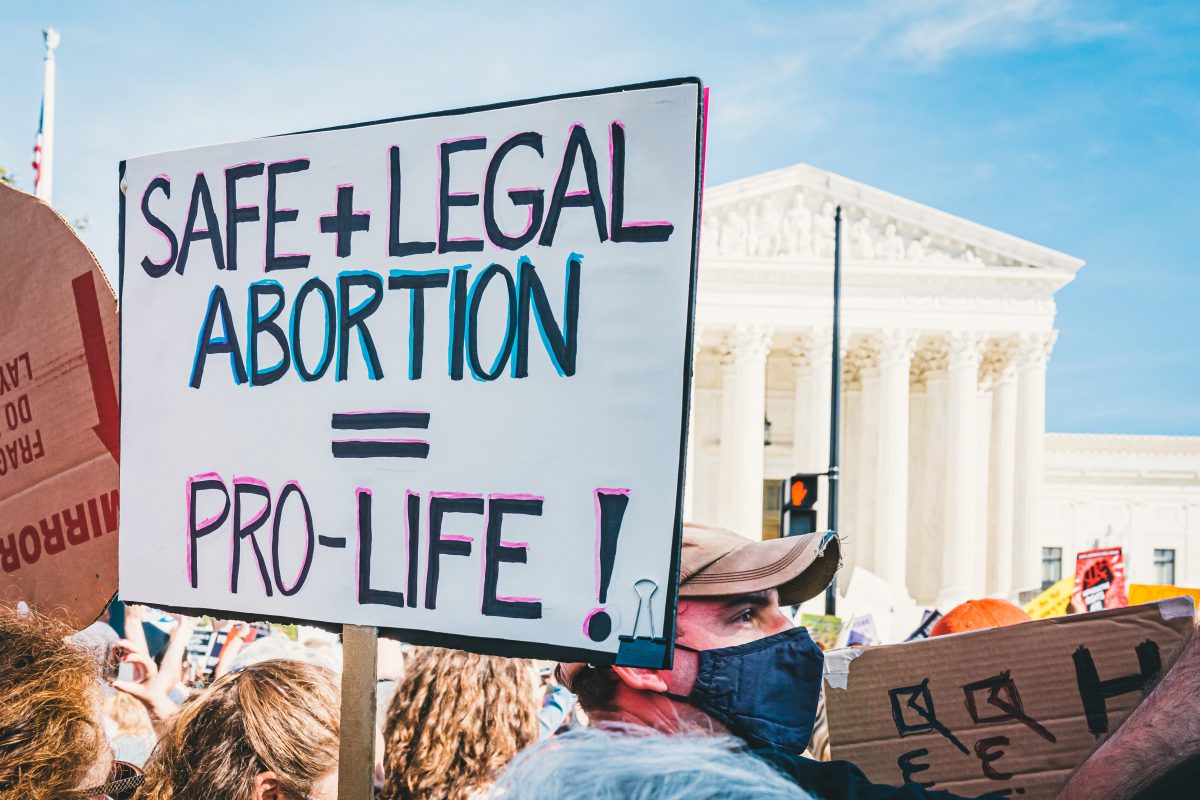How the Committee on the Rights of the Child Paved the Way for Stronger Abortion Rights
Some Thoughts on Camila v Peru
On 13 June 2023, the Committee on the Rights of the Child (CtRC) published its decision in the case of Camila v Peru (pseudonymised), marking a significant milestone in the fight for stronger abortion rights. The case involved a 13-year-old Peruvian girl who, after being raped by her father, faced harassment and numerous barriers when attempting to access abortion services by the police, medical and judicial personnel. Despite the legality of abortion in Peru for cases endangering the pregnant person’s life and health, she was denied the necessary care, despite her pleas and evident emotional distress, including strong suicidal tendencies (para. 8.3). Eventually, after she suffered a miscarriage, the girl was prosecuted and convicted for self-abortion (para. 8.15).
The CtRC condemned Peru for the structural deficiencies in the healthcare sector and judicial system regarding the protection of pregnant adolescents and found a series of violations of the Convention on the Rights of the Child (CRC). Doing so, it acknowledged the intersectional dimension of the case due to Camila’s status as a girl from a rural area with limited access to financial resources and education and found its place among the celebrated decisions on abortion rights (see here and here). This blogpost will outline the CtRC’s striking findings in this decision and will highlight the inspiration that other fora could draw from this innovative decision, especially the European Court of Human Rights (ECtHR), the regional human rights court with the most extensive abortion jurisprudence.
Violation of the Right to Life and Health
The CtRC acknowledged that the inaccessibility of abortion posed a threat to Camila’s life and health, both mentally (leading to suicidal tendencies) and physically (leading to an obstetric emergency) and breached CRC Articles 6 and 24. This finding mirrors the existing work of the UN Treaty bodies. The Human Rights Committee (HRC) has, on several occasions, noted, that failing to provide access to abortion violates the pregnant person’s rights to (physical and mental) health and life, inter alia when the pregnancy is a result of rape or incest (e.g. General comment No. 36, para. 8; K.N.L.H v Peru, para. 6.3). Similar observations have been made by the CEDAW-Committee (para. 8.15) and the Committee on Social, Cultural and Economic rights (para. 28). Altogether, the existing case-law follows a casuistic approach, assessing whether a concrete risk to health and life in the individual case exists, with only few (widely) accepted circumstances that presume the existence of such a risk. As also reflected in State practice (see for an overview here), rape as the cause of the pregnancy and foetal non-viability currently seem to be the most widely accepted of such circumstances.
However, the CtRC’s finding seems to be going beyond these standards. It not only reaffirms the HRC’s findings that abortion must be accessible in cases of severe risk to the pregnant person’s health and life, but it also declares that although the individual impact of the pregnancies on minors might vary due to factors such as family support system, maturity and mental health status (para. 8.5), pregnancies of children and adolescents inherently pose a heightened risk of harm and mortality (para. 8.4). In this regard, the CtRC bases its reasoning on the increased physical and mental health impact of pregnancy on children, particularly the important risk caused by possible complications during pregnancy and childbirth and the potentially serious impact on their development and future life plan (para. 8.5). Thus, it references the status of Camila as a rape victim as an aggravating rather than a decisive factor for requiring the access to abortion (para. 8.7). Against this background, the decision could be arguably seen as revealing that, to the CtRC, abortion must always be accessible for adolescents. This finding is supported by the CtRC’s urge for States to decriminalize abortion for minors (para. 8.4), which is rooted in General Comment No. 15 where the CtCR already highlighted the specific need of children to be able to make autonomous and informed decisions on their reproductive health (para. 56). Thus, the CteeRC seems to be adding to the relevant international framework another circumstance that presumes a severe risk to life and health requiring access to abortion, namely the pregnancy of minors.
Doing so, the CtRC further avoids engaging in a balancing exercise between the rights and interests of the pregnant adolescent on the one hand and the interests granted to the unborn on the other. For this precise reason, the ECtHR has attracted the criticism of feminist legal scholars. The latter have highlighted that by engaging in such a balancing exercise (Vo v. France, para 80; Boso v. Italy, para 1), the ECtHR annihilates pregnant persons, as from the moment they get pregnant, their selfhood and the extent to which they are owed protection of their physical integrity lessens (Avolio, 11). For the CtRC, such an assessment is not necessary; the adolescents’ pregnancy itself is presumed to justify abortion.
Evidently, the CtRC’s approach has also avoided another criticism that the ECtHR has not managed to escape, i.e. it has avoided operating as a fourth-instance court, which assesses whether the right to access abortion under the domestic law was correctly implemented in practice (Avolio, 12-15). Unlike the ECtHR (P and S v. Poland, Csoma v Romania), the CtRC did not find it necessary for its assessment to establish whether the abortion would have been legal under domestic law (para. 8.3). A similar approach has already been taken in General Comment No. 15 where it recommended that access to safe abortion should be granted to minors irrespective of whether abortion itself is legal (para. 70), evincing that the decision could influence relevant jurisprudence to rely less on national but rather international standards.
Violation of the Prohibition of Inhuman or Degrading Treatment
Furthermore, the CtRC explicitly acknowledged that lack of access to therapeutic abortion may constitute cruel, inhuman or degrading treatment (para. 8.11). Precisely, it recalled that in the area of sexual and reproductive rights, the UN treaty bodies have established that denial of access to abortion by States are forms of gender-based violence against women that may constitute cruel, inhuman or degrading treatment and highlighted that, when analysing possible violations of the prohibition of inhuman or degrading treatment, the special impact of the denial of abortion on girls, as well as other factors of vulnerability should be taken into account (para 8.11). The Committee concluded that the severe physical and psychological harm suffered by Camila as a result of the inaccessibility of abortion and a series of acts and omissions attributable to the State party (i.e. the revictimization of Camila by the police and medical personnel who obstructed her from accessing abortion, as well as by the judicial personnel, which prosecuted her for self-abortion) constituted treatment prohibited by Article 37(a) of the CRC.
In its analysis, the Committee referenced the vulnerability of the applicant due to her age and the fact that her father raped her (para. 8.12). However, the CtRC further underlined that this vulnerability ‘exacerbated the author’s suffering caused by the impossibility of terminating the pregnancy and facing her prosecution’ (ibid). In this sense, Camila’s vulnerability was, again, not the decisive factor for the acknowledgement of the violation of the prohibition of inhuman or degrading treatment, but a mere exacerbating factor instead.
Doing so, the Committee avoided doing what it criticised the States’ organs for, i.e. revictimizing Camila. Indeed, as has been underlined by feminist legal scholars, the mainstream jurisprudential approach, whereby certain parameters that are extrinsic to the pregnant person’s control (such as their age, the foetus’ disability, or a criminal act that caused the pregnancy) are decisive in the fora’s assessment of whether the pregnant person’s suffering reaches the threshold of the prohibition of inhuman or degrading treatment, victimises abortion-seekers, as it leads to a determination of whether the inaccessibility of abortion qualifies as inhuman or degrading treatment on the basis of random parameters (Jaggar, 354). This mainstream approach, which can be primarily found in the ECtHR’s jurisprudence (P and S v. Poland, paras. 162-167; R and R v. Poland, paras. 159-160), (re-)victimises rape survivors or other vulnerable abortion-seekers, which have to be presented as blameless, weak and worthy of an abortion, for a violation of the prohibition of inhuman or degrading treatment to be acknowledged. Conversely, the CtRC’s approach exclusively centred the impact of being forced to continue the pregnancy on the pregnant persons’ right not to be subjected to inhuman or degrading treatment and found that various vulnerability factors simply exacerbated Camila’s suffering (para. 8.12). Using the term ‘rape survivor’ over ‘rape victim’ would have called for additional praise of the CtRC’s pronouncement.
Violation of the Prohibition of Discrimination
Finally, the CtRC acknowledged that Camila’s lack of access to safe abortion and her subsequent prosecution for self-abortion ‘constituted, in themselves, differential treatment based on the author’s gender, because she was denied access to an essential service for her health and was punished for not complying with gender stereotypes about her reproductive role’ (para. 8.15). Although the prohibition of access to abortion had been already acknowledged as a form of discriminatory treatment in the jurisprudence of the CEDAW Committee, the ECtHR has been more hesitant in reaching the same conclusion. Most notably, although relevant claims have been brought before the ECtHR on several occasions (Tysiąc v Poland, paras. 136-144; P and S v. Poland, para. 170; A, B and C v. Ireland, paras. 269-270), the Court has not deemed it necessary to engage in an assessment of whether restrictive abortion policies breach the prohibition of discrimination under the ECtHR. As a result, the ECtHR has missed opportunities for the identification of persons who face restrictions to access to abortion as an affected group of discrimination and has neglected the central and less individualist side of abortion restrictions, i.e. the gendered discrimination on which they are based (Siegel, p. 43). Acknowledging that the inaccessibility and criminalisation of abortion at least in cases where the pregnancy constitutes severe health risks are per se discriminatory, the CtRC manages to avoid similar points of criticism and makes a decisive step towards reproductive justice.
Conclusion
As the analysis above evinces, the CtRC’s decision in Camila v Peru has not only managed to pave the way for stronger abortion rights by outlining access to abortion for minors as a legal responsibility but has further set important incentives for the feministisation of abortion-related jurisprudence by meeting some of the standards that have been raised in feminist scholars’ writings. It remains to be seen whether it will receive the attention it deserves from other human rights fora and whether it will manage to influence the ECtHR’s current restrictive approach.
The “Bofaxe” series appears as part of a collaboration between the IFHV and Völkerrechtsblog.


Vanessa Bliecke is a PhD candidate and Research Associate at Ruhr University Bochum’s Institute for International Law of Peace and Armed Conflict (IFHV).
